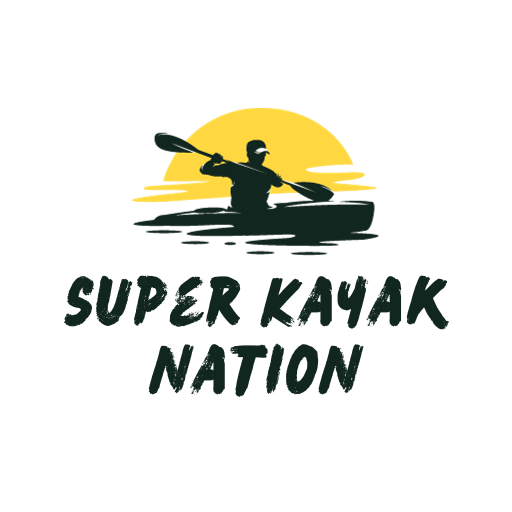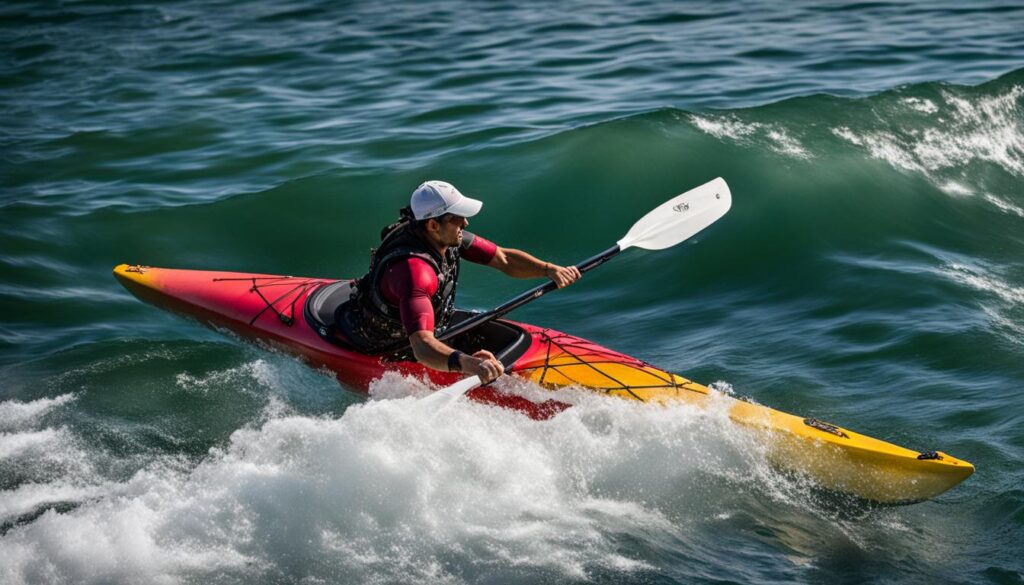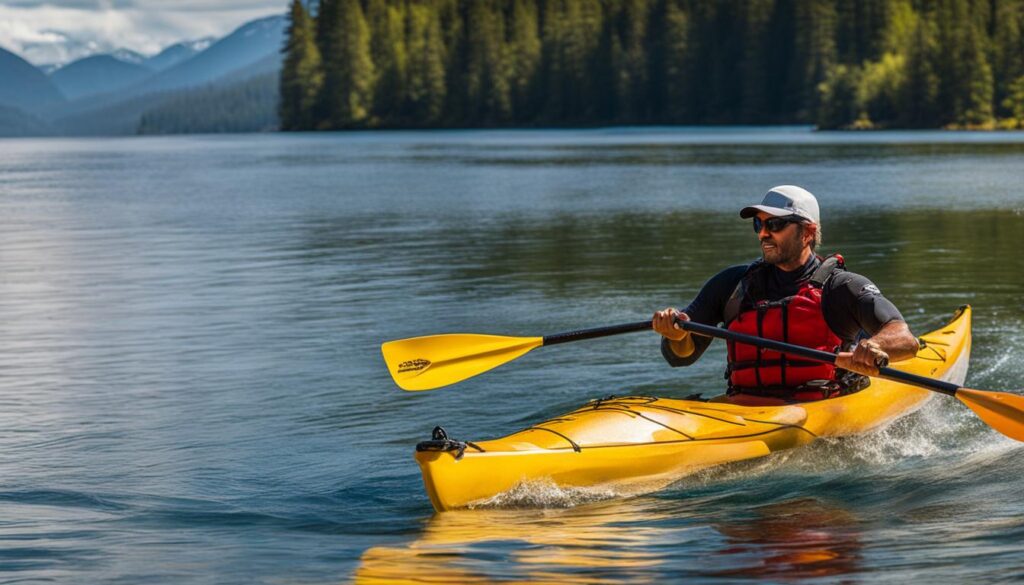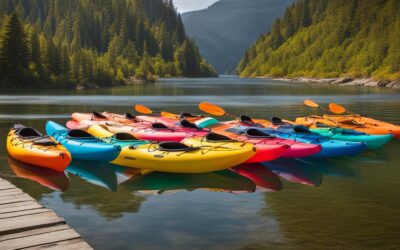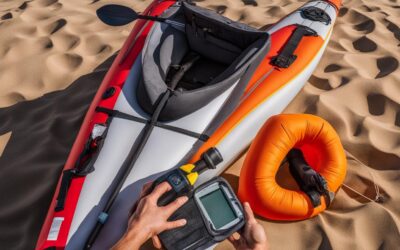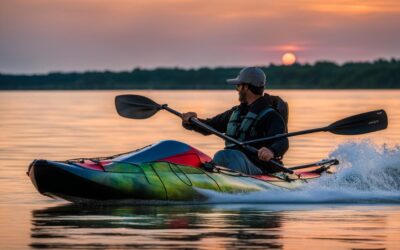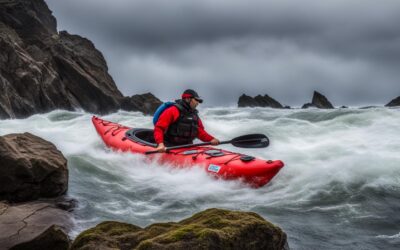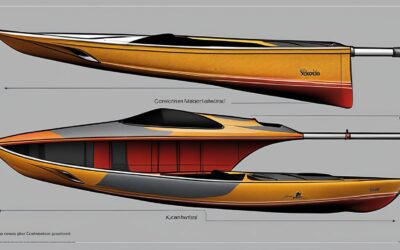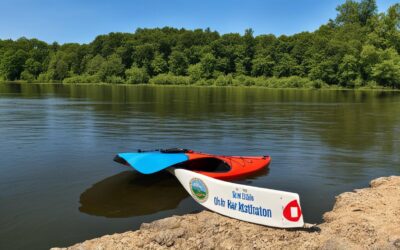Learning proper paddling techniques is essential for efficient and enjoyable kayaking. By mastering key strokes and maintaining proper form, you can navigate through the water with ease. This section will cover the basics of holding the paddle correctly, performing essential strokes like the forward stroke, draw stroke, sweep stroke, and reverse stroke, as well as learning turning and stopping techniques. With consistent practice and attention to technique, you can become a proficient kayak paddler.
Are you a beginner looking to learn how to paddle a kayak? This detailed guide will equip you with the knowledge and skills needed to paddle efficiently and confidently. Whether you’re planning a leisurely kayaking trip or seeking an adventurous water sport, mastering these techniques will enhance your overall experience on the water. Let’s dive in and discover the art of kayaking!
Holding the Paddle Correctly
Learning how to hold a kayak paddle correctly is the first step towards becoming a skilled kayaker. By mastering the proper technique, you will be able to paddle efficiently and comfortably. Here are four key things to consider when holding a paddle:
- Type of Paddle Blades: Understand the type of paddle blades you have. Blades can be matched or feathered, asymmetrical or symmetrical, concave or flat.
- Orienting the Blades: Ensure that the blades are properly oriented. The concave side of the blade should face towards you, giving you a firm grip on the water during each stroke.
- Grip Placement: Adjust where you grip the paddle shaft. A common technique is to hold the paddle shoulder-width apart, allowing for maximum control and power.
- Relax Your Grip: It’s important to relax your grip on the paddle. Holding it too tightly can cause unnecessary tension and fatigue in your hands and arms. Maintain a firm yet relaxed grip for optimal performance.
By following these guidelines, you will be able to achieve a comfortable and effective grip on the paddle. This will enhance your overall paddling experience and allow you to paddle with confidence and ease.
Why Holding the Paddle Correctly Matters
Holding the paddle correctly is crucial for several reasons. First, it helps you avoid unnecessary strain on your muscles and joints, preventing fatigue and increasing your endurance on the water. Second, it allows you to maintain control and stability, especially during challenging conditions or maneuvers. Finally, holding the paddle correctly ensures that you can generate maximum power and efficiency with each stroke, propelling yourself forward with ease.
By taking the time to learn and practice the proper paddle grip, you are setting yourself up for success in your kayaking adventures. Remember, the paddle is your connection to the water, so make sure you hold it with confidence and intention.
Performing the Forward Stroke, Draw Stroke, Sweep Stroke, Reverse Stroke
Mastering the essential kayak paddle strokes is crucial for efficient and effective paddling. These strokes will enable you to maneuver your kayak with precision and control. Let’s explore the techniques for performing the forward stroke, draw stroke, sweep stroke, and reverse stroke.
1. Forward Stroke
The forward stroke is the foundation of kayak paddling. To execute this stroke, engage your core and back muscles to generate power. Start by reaching forward with the paddle and immerse the blade fully into the water near your toes. Pull the paddle back, keeping it close to the kayak’s side, and rotate your torso as you push the blade past your hip. Repeat this motion on the other side to maintain a steady rhythm and propel yourself forward.
2. Draw Stroke
The draw stroke is useful for moving your kayak sideways. To perform this stroke, extend your arms outwards and place the paddle blade perpendicular to the kayak’s side, with the blade submerged in the water. Apply pressure with the blade and pull the kayak towards the paddle. You can use the draw stroke to navigate tight spaces or maintain position against currents or wind.
3. Sweep Stroke
The sweep stroke is ideal for making turns while kayaking. To execute this stroke, start with the paddle positioned at the front of the kayak. Submerge the blade in the water near the bow and sweep it in a wide arc towards the stern. The sweeping motion, combined with the rotation of your torso, will cause the kayak to turn gradually in the direction of the stroke. Use the sweep stroke to navigate around obstacles or change your heading.
4. Reverse Stroke
The reverse stroke is essential for braking and backing up your kayak. To perform this stroke, place the paddle behind you with the blade submerged in the water. Push the paddle forward while keeping it close to the kayak’s side, and rotate your torso to generate power. The reverse stroke allows you to slow down or stop your kayak and can be useful when navigating tight or congested areas.
By mastering these kayak paddle strokes, you will have the foundation to navigate various water conditions and maneuver your kayak with confidence. Practice these techniques regularly and pay attention to your form to ensure efficient and enjoyable paddling experiences.
Learning Turning and Stopping Techniques
In addition to mastering the essential kayak paddle strokes, it’s vital to learn effective turning and stopping techniques. These skills will not only enhance your control over the kayak but also contribute to your safety while out on the water.
Turning Techniques:
- 1. Sweep Stroke: The sweep stroke is a valuable technique for making gentle turns. To execute this stroke, extend your paddle away from the kayak and gradually sweep it in a wide arc towards the stern. This motion will create a gradual arcing turn, allowing you to navigate your kayak smoothly.
Stopping Techniques:
- 1. Reverse Sweep Stroke: When you need to stop or slow down, the reverse sweep stroke is highly effective. This stroke involves sweeping the paddle in a wide arc towards the bow of the kayak, generating a braking effect that helps you come to a halt or reduce your speed.
By mastering these turning and stopping techniques, you’ll have greater confidence and control over your kayak. Remember to practice these strokes in different conditions to familiarize yourself with their effectiveness in various scenarios.
With the knowledge of proper technique and a range of effective strokes at your disposal, you are well on your way to becoming a skilled and efficient kayaker. In the next section, we will explore the importance of maintaining proper technique and provide some valuable tips to help you paddle like a pro.
Maintaining Proper Technique
As a beginner in kayak paddling, it’s important to prioritize maintaining proper technique to enhance your skills and ensure an enjoyable experience on the water. Here are some valuable tips to keep in mind:
1. Focus on Your Posture
Sit up straight in your kayak, aligning your spine and engaging your core muscles. This will not only improve your paddling efficiency but also provide stability and reduce the risk of back pain.
2. Engage Your Core and Back Muscles
Instead of relying solely on your arm strength, focus on using your core and back muscles to power your strokes. This technique will help you generate more power, maintain endurance, and prevent fatigue.
3. Use Smooth and Efficient Strokes
Avoid jerky movements and aim for smooth, continuous strokes. This will optimize your forward propulsion while minimizing the chance of capsizing or losing control of your kayak.
4. Visualize a Narrow Channel
Imagine paddling through a narrow channel of poles, with each stroke pulling you closer to the next pole. This visual technique can help you maintain a consistent rhythm and improve your overall paddling efficiency.
5. Continuously Assess and Improve Your Technique
Regularly review your paddling technique through video analysis or seek feedback from experienced paddlers. By identifying areas for improvement and consistently working on your skills, you can progress as a kayaker and enhance your enjoyment on the water.
By following these kayak paddling tips and prioritizing proper technique, you will become a more confident and skilled paddler. Remember, practice makes perfect, so keep exploring and enjoying your kayaking adventures!
FAQ
How should I hold the paddle correctly?
Holding the paddle correctly involves understanding the type of paddle blades, orienting the blades properly, adjusting where you grip the shaft, and relaxing your grip. By following these guidelines, you can ensure a comfortable and effective grip on the paddle.
What is the most fundamental stroke in kayaking?
The most fundamental stroke in kayaking is the forward stroke. It involves engaging your core and back muscles to power your stroke rather than relying solely on your arms.
How do I turn the kayak?
To turn the kayak, you can use the sweep stroke. By sweeping the blade in a wide arc towards the stern of the boat, you can achieve a gradual arcing turn.
How do I stop the kayak?
To stop the kayak, you can use the reverse stroke. This stroke is used for braking and backing up.
How can I maintain proper technique while kayaking?
To maintain proper technique, focus on sitting up straight, engaging your core and back muscles, and using smooth, efficient strokes. Avoid bobbing or lunging, as these actions can decrease your speed and stability. Regularly assess your technique through video analysis and continuously work on improving your skills.
